
Samizdat was a form of dissident activity across the socialist Eastern Bloc in which individuals reproduced censored and underground makeshift publications, often by hand, and passed the documents from reader to reader. The practice of manual reproduction was widespread, due to the fact that most typewriters and printing devices were inventorized and required permission to access. This grassroots practice to evade official Soviet censorship was fraught with danger, as harsh punishments were meted out to people caught possessing or copying censored materials.

Leonid Iovich Gaidai was a Soviet and Russian comedy film director who enjoyed immense popularity and broad public recognition in the former Soviet Union. His films broke theatre attendance records and were some of the top-selling DVDs in Russia. He has been described as "the king of Soviet comedy".
Censorship in the Soviet Union was pervasive and strictly enforced.
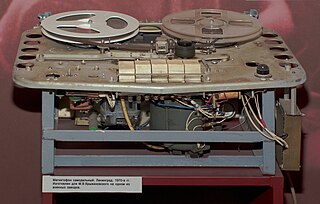
Magnitizdat was the process of copying and distributing audio tape recordings that were not commercially available in the Soviet Union. It is analogous to samizdat, the method of disseminating written works that could not be officially published under Soviet political censorship. It is also similar to bootleg recordings, except it was often sanctioned by the performers, who did not expect to make money from these recordings anyway and wanted to make their work as well known as possible.
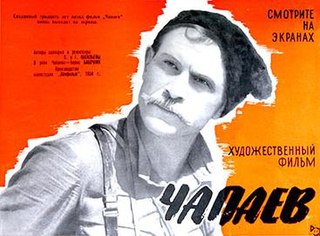
Chapaev is a 1934 Soviet war film, directed by the Vasilyev brothers for Lenfilm.
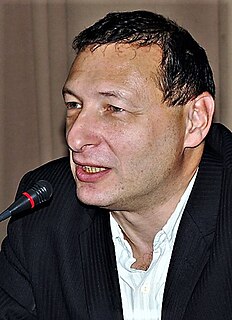
Boris Yulyevich Kagarlitsky is a Russian Marxist theoretician and sociologist who has been a political dissident in the Soviet Union and in post-Soviet Russia. He is coordinator of the Transnational Institute Global Crisis project and Director of the Institute of Globalization and Social Movements (IGSO) in Moscow.
Cine Fantom is a film club in Russia.

The Youth of Maxim is a 1935 Soviet historical drama film directed by Grigori Kozintsev and Leonid Trauberg, the first part of trilogy about the life of a young factory worker named Maxim.

The Return of Maxim is a 1937 Soviet drama film directed by Grigori Kozintsev and Leonid Trauberg, the second part of trilogy about the life of a young factory worker, Maxim.

The Vyborg Side is a 1939 Soviet drama film directed by Grigori Kozintsev and Leonid Trauberg, the final part of trilogy about the life of a young factory worker, Maxim. The film was also released in the United States under the title New Horizons.

Assa (Асса) is a 1987 Soviet crime film directed and co-written by Sergei Solovyov. It became a cult film, mainly due to the fact that it was one of the films that brought Russian rock music from the underground into the mainstream. Solovyov made a sequel to the film twenty years later, 2-ASSA-2.
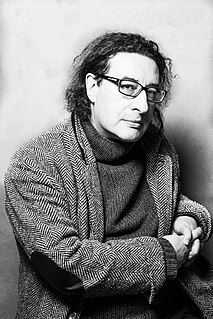
Boris Yukhananov is a Russian director of theatre, video, cinema and TV, a theatre educator and theorist. He is currently the Artistic Director of the Stanislavsky Electrotheatre, Moscow. He was a pioneering figure in Russia’s underground art movement in the 1980s and 1990s and was one of the founders of the Soviet Parallel Cinema movement, which provided an alternative cinema to that which was produced by the state. His recent major works include a radical interpretation of Maurice Maeterlinck’s The Blue Bird, the opera serial Drillalians and the two-part The Constant Principle. Founder of the new processualism movement, a methodology and artistic strategy that posits theatre as the focal point of all forms of art involving every aspect of time, whether it be cinema, a musical concert or performance art.

The Unforgettable Year 1919 is a 1951 Soviet biographical film directed by Mikheil Chiaureli.
The cinema of Turkmenistan dates back to the 1920s, when the country was within the Soviet Union. Since independence in 1991, Turkmenistan has had the most limited film production industry of any Central Asian state.
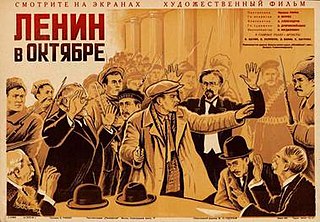
Lenin in October is a 1937 Soviet biographical drama film directed by Mikhail Romm and Dmitri Vasilyev and starring Boris Shchukin, Nikolay Okhlopkov and Vasili Vanin. Made as a Soviet-realist propaganda work by the GOSKINO at the Mosfilm studio, it portrays the activities of Lenin at the time of the October Revolution. All Stalin scenes were expunged from the film for its reissue in 1958.
Margarita Aleksandrovna Barskaya was a Soviet actress, filmmaker, and screenwriter. She wrote the screenplays for and directed three films. She was married to director Pyotr Chardynin.
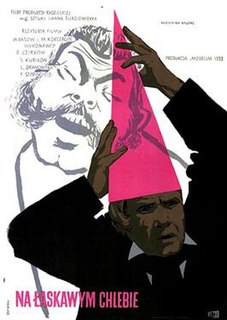
The Boarder is a 1953 Soviet drama film directed by Vladimir Basov and Mstislav Korchagin and starring Boris Chirkov, Sergei Kurilov and Lidiya Dranovskaya. It is based upon the play of the same name by Ivan Turgenev.
My Son is a 1928 Soviet silent drama film directed by Yevgeni Chervyakov and starring Gennadiy Michurin, Anna Sten and Pyotr Berezov.
Russian Souvenir is a 1960 Soviet comedy film directed by Grigori Aleksandrov.
Anna Nikolaevna Zemtsova (Russian: Анна Николаевна Земцова, also known as Anna Li, Anna Pudovkina or Anna Zemcova, was a Soviet silent film actress and film theorist. She was married to Vsevolod Pudovkin.















